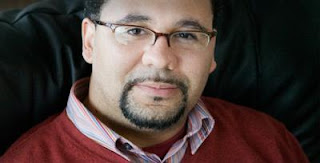An analysis of clinical trial data from a U-M based group implicates biological factors behind worse outcomes for African-Americans with breast, ovarian, or prostate cancer.
ANN ARBOR, Mich. - An analysis of almost 20,000 patient records from the Southwest Oncology Group’s database of clinical trials finds, for the first time, that African-American breast, ovarian, and prostate cancer patients tend to die earlier than patients of other races even when they get identical medical treatment and other confounding socioeconomic factors are controlled for. The finding points to biological or host genetic factors as the potential source of the survival gap.

Based at U-M, the Southwest Oncology Group conducts cancer clinical trials through a network of more than 500 affiliated institutions. | “When you look at the dialogue about the issue of race and cancer survival that’s gone on over the years,” says the paper’s lead author, Kathy Albain, M.D., a breast and lung cancer specialist at Loyola University’s Cardinal Bernardin Cancer Center, |
“it always seems to come down to general conclusions that African-Americans may in part have poorer access to quality treatment, may be diagnosed in later stages, and may not have the same standard of care delivered as Caucasian patients, leading to a disparity in survival.”
The study, published in the Journal of the National Cancer Institute (JNCI), found that when treatment was uniform and differences in tumor prognostic factors, demographics, and socioeconomic status were controlled, there was in fact no statistically significant difference in survival based on race for a number of other cancers — lung, colon, lymphoma, leukemia, and multiple myeloma.
“The good news is that for most common cancers,” Albain says, “if you get good treatment, your survival is the same regardless of race. But this is not the case for breast, ovarian, and prostate cancers.”
Even with good treatment by the same doctors, African-American patients with one of these three cancers faced a significantly higher risk of death than did other patients, ranging from a 21% higher risk for those with prostate cancer to a 61% higher risk for ovarian cancer patients.
The elimination of treatment and socioeconomic factors as the cause of this higher mortality “implicates biology,” says study co-author Dawn L. Hershman, M.D., of the Columbia University College of Physicians and Surgeons.
“There may be differences in genetic factors by race that alter the metabolism of chemotherapy drugs or that make cancers more resistant or more aggressive,” she adds.
Hershman published a smaller study last month that found that, at least with breast cancer, disparities in survival based on race persist even after adjusting for differences in treatment. That study, published in the Journal of Clinical Oncology, analyzed data on 634 breast cancer patients.
“Our study of multiple cancers is distinguished from others that have looked at race-based disparities by its size and by the source of its data,” says Joseph Unger of the Southwest Oncology Group’s Statistical Center, who was statistician and co-author on the new JNCI study.
The study analyzed records from 35 clinical trials — going back as far as 1974 — that had been conducted by the Southwest Oncology Group, an NCI-sponsored cooperative group headquartered at the University of Michigan. Using data from clinical trials, which are already controlled for a range of potentially confounding factors such as differences in diagnosis, treatment, and follow-up, helps throw the remaining factors into sharper relief, according to Frank L. Meyskens, Jr., M.D.
“It’s because of the similar way that people are treated on clinical trials that these differences are even detectable,” he says. Meyskens is associate chair for Cancer Control and Prevention for the Southwest Oncology Group and director of the University of California-Irvine’s Chao Family Comprehensive Cancer Center.
The urgency of addressing the reasons for racial disparities in outcomes — both sociological and biological — is amplified by another recent study in the Journal of Clinical Oncology. It predicts the cancer incidence among minorities will nearly double in the coming decades, increasing 99% by 2030 compared to an expected 31% increase among whites.
And the
American Society of Clinical Oncology, the field’s premier professional organization, recently issued a “Disparities in Cancer Care” policy statement that recommends a set of strategies for improving outcomes for minority cancer patients.
“The elimination of socioeconomic and healthcare access disparities must be a priority in the United States,” says
Lisa Newman, M.D., director of the Breast Care Center at the
University of Michigan Comprehensive Cancer Center. “However, Dr. Albain’s landmark study demonstrates that further investigation of race- or ethnicity-associated differences in primary tumor biology is also important.”
Additional Authors
John Crowley, Ph.D., of the Southwest Oncology Group Statistical Center and Charles A. Coltman, M.D., of the University of Texas Health Science Center
Funding
National Cancer InstituteAbout the Southwest Oncology Group
Headquartered at the University of Michigan, the
Southwest Oncology Group is one of the largest cancer clinical trials cooperative groups in the United States. Funded primarily by the National Cancer Institute, the group designs and conducts clinical trials to advance the science of cancer prevention and treatment and to improve the quality of life for cancer survivors. The almost 5,000 physician-researchers in the Group’s network practice at more than 500 institutions, including 19 of the National Cancer Institute-designated cancer centers. The Group is headquartered at the University of Michigan in Ann Arbor, Mich. (734-998-7140). The Group has an operations office in San Antonio, Texas and a statistical center in Seattle, Wash.
Contact: Frank DeSanto
fdesanto@umich.edu 734-998-0114
University of Michigan Health System






























